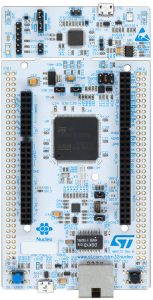ISIT, a portable stack to implement CANopen in safety-critical systems on nearly all STM32

There aren’t many solutions to help teams implement CANopen, which is why ISIT’s stack on STM32 devices is a significant addition to the ST Partner Program. By offering stacks compliant with the CiA-301 and CiA-304 requirements and another that received the SIL2 and SIL3 certifications, ISIT helps with CANopen implementation. Engineers also benefit from a framework free of third-party code, meaning there are no royalties on certain versions of the stack. And thanks to ISIT’s partnership with ST, the stacks are portable from one STM32 series to the next, thus vastly simplifying operations. For instance, when using the highest safety certification levels, a stack takes only 90 KB of Flash and 16 KB of RAM.
Why CANopen?
From CAN to CAL
In 2021, ST, ISIT, and Embedded Office held a webinar (see video below) on managing safety-critical industrial applications on STM32 microcontrollers. ISIT specializes in safety and security applications in embedded systems. During the webinar, it explained how the CANopen stack worked and how it could fit into a safety-critical application. Indeed, as we already discussed when we talked about CAN FD Light, while CAN itself was initially designed for the automotive industry, it rapidly found a home in industrial automation. It became so popular that in 1992, the CAN in Automation (CiA) association released the CAN Application Layer (CAL).
Popularizing CAN in applications
According to a brief history by Pfeiffer, Ayer, and Keydel, the problem was that every implementation required the creation of a new profile. Consequently, in 1995, the CiA released CANopen, which solved CAL’s issues as it inaugurated profiles for devices, interfaces, and applications and brought a higher level of programmability. CANopen was an immediate success and found its way into many industrial and transportation systems. As its popularity grew, markets used CANopen in safety-critical systems by creating redundancies and updating the framework to add things like safety-relevant data objects or safety-relevant validation time.
CANopen and new safety regulations
New government regulations and overall market trends also require more products to acquire safety certifications. As a result, teams that previously didn’t have to think of such things are now scrambling to understand what they must do to get them. Unfortunately, safety certifications are notoriously difficult, and it can take years to grasp what they entail fully. For instance, the CANopen stack from ISIT that received a SIL-3 certification took two years to develop. It’s also the reason why ISIT increasingly offers training and consulting services.
Why ISIT’s CANopen stack on STM32?
CANopen on STM32

Nearly all STM32 series have at least one CAN interface, meaning engineers looking to implement a CAN protocol often gravitate toward our microcontroller. However, taking advantage of the CAN interface on an STM32 to implement a CAN protocol in an application is still challenging. Hence, the CANopen stacks from ISIT represent a powerful solution because teams don’t have to start from scratch. Their stack also includes drivers to ensure it runs optimally on our MCUs. Similarly, ISIT offers a J1939 stack, which uses CAN as a communication bus in heavy-duty vehicles. Put simply, the company has spent years gaining expertise around CAN and is making it available so others can focus on differentiating features.
One way ISIT perfected its CANopen implementation was by designing a gateway using an STM32F207. Thanks to its two CAN ports and Ethernet connection, developers can easily work on CANopen industrial applications. It can also act as an intermediary between incompatible CAN protocols, among other things. Consequently, engineers can keep older devices and use the gateway to ensure they can still talk to the different CAN devices on the network. The gateway even has an open JTAG interface so developers can modify its firmware to adapt it to their needs and better simulate their application’s requirements.
Click Link: https://blog.st.com/isit/

